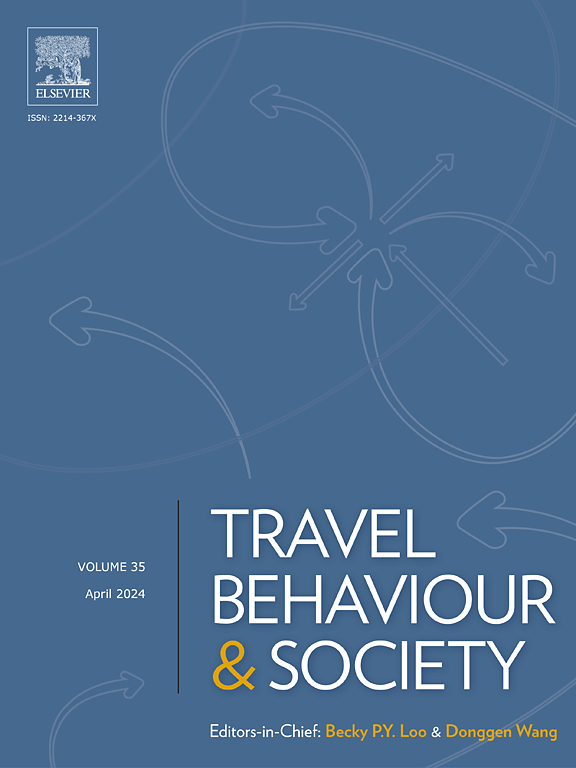Beyond the red and green: Effects of rational and irrational factors in pedestrian choice at two-stage signalized crossings with independent phases
IF 5.1
2区 工程技术
Q1 TRANSPORTATION
引用次数: 0
Abstract
Pedestrian safety warrants significant attention, specifically red-light violation behavior at these two-stage signalized crossings. Distinct from pedestrian behaviors at one-stage crossings, the decision-making processes at two-stage signalized intersections can be influenced by the signal conditions of the subsequent crossing stage. Moreover, the rational assessment of trade-offs between time and safety may shift under different situational conditions at two-stage intersections. To investigate these dynamics, the current study employs a stated preference (SP) survey to elucidate the factors influencing pedestrian crossing decisions at two-stage signalized crossings. A random parameter random regret multinomial logit model is utilized to quantify the probabilities of different crossing behaviors. The results demonstrate the presence of a green signal at the subsequent stage is positively with the likelihood of red light violation at the current stage, suggesting a predominant preference for time-saving over rule adherence, despite associated risks. Intriguingly, individuals characterized by low risk-taking and time-saving proclivities exhibit a significantly greater likelihood of red light running. These findings contribute to a nuanced understanding of pedestrian behavior, offering strategic insights for behavioral interventions and transportation planning, such as optimizing signal time plan, implementing advanced transportation facilities, improving junction design and enhancing deterrence measures, thereby enhancing safety and promoting walkability in urban environments.
红绿灯之外:两阶段独立信号灯路口行人选择中理性和非理性因素的影响
行人安全问题,尤其是这些两段式信号灯交叉路口的闯红灯行为,值得高度关注。与单段式交叉路口的行人行为不同,两段式信号灯交叉路口的决策过程会受到后续交叉路口信号灯条件的影响。此外,在两阶段交叉路口的不同情景条件下,对时间和安全之间权衡的合理评估可能会发生变化。为了研究这些动态变化,本研究采用了陈述偏好(SP)调查,以阐明影响行人在两阶段信号灯控制交叉路口过街决策的因素。研究采用了随机参数随机遗憾多叉 Logit 模型来量化不同过街行为的概率。结果表明,下一阶段绿灯信号的出现与当前阶段闯红灯的可能性呈正相关,这表明尽管存在相关风险,但人们更倾向于节省时间而不是遵守规则。耐人寻味的是,风险承担和节省时间倾向较低的个体闯红灯的可能性明显更大。这些发现有助于深入了解行人行为,为行为干预和交通规划(如优化信号灯时间计划、实施先进的交通设施、改进路口设计和加强威慑措施)提供战略性见解,从而提高城市环境的安全性和步行便利性。
本文章由计算机程序翻译,如有差异,请以英文原文为准。
求助全文
约1分钟内获得全文
求助全文
来源期刊

Travel Behaviour and Society
TRANSPORTATION-
CiteScore
9.80
自引率
7.70%
发文量
109
期刊介绍:
Travel Behaviour and Society is an interdisciplinary journal publishing high-quality original papers which report leading edge research in theories, methodologies and applications concerning transportation issues and challenges which involve the social and spatial dimensions. In particular, it provides a discussion forum for major research in travel behaviour, transportation infrastructure, transportation and environmental issues, mobility and social sustainability, transportation geographic information systems (TGIS), transportation and quality of life, transportation data collection and analysis, etc.
 求助内容:
求助内容: 应助结果提醒方式:
应助结果提醒方式:


